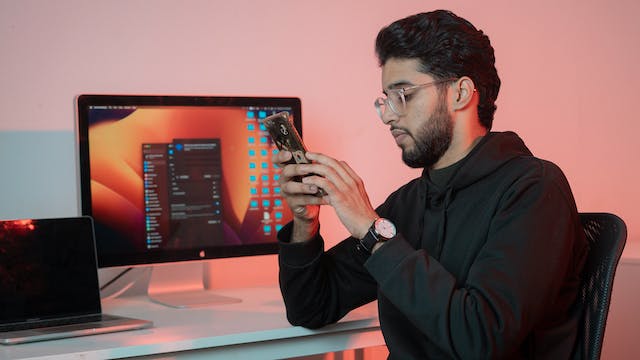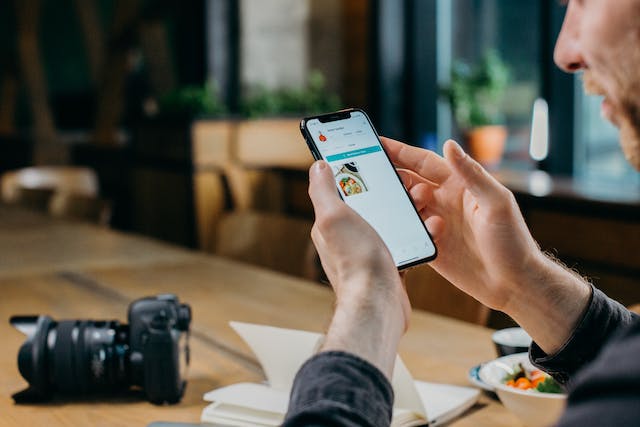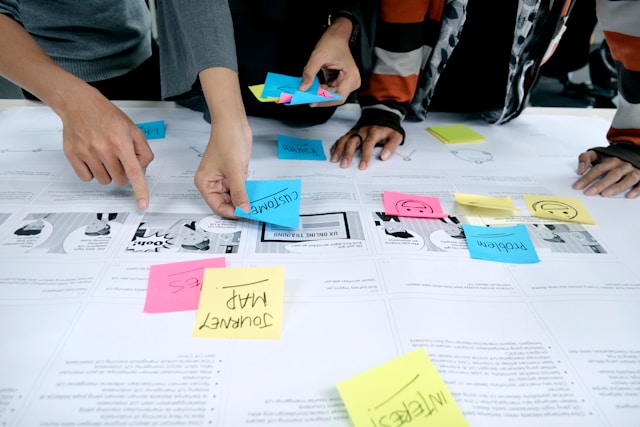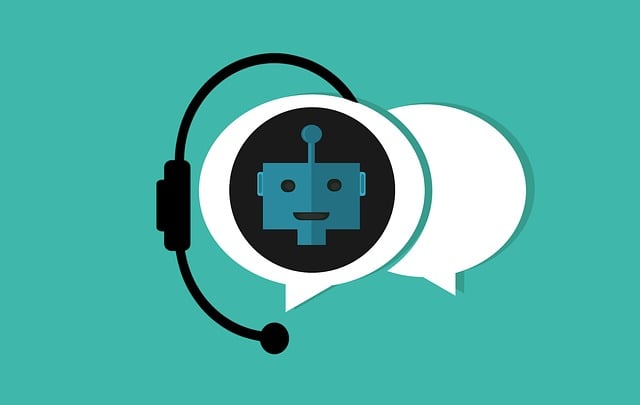First impressions matter. Have you ever used a website or app for the first time and immediately exited it? You’re not alone. As a UX designer, it’s your job to make sure users don’t have this experience. Instead, you need to give them a first-time user experience (FTUE) that wows.
Here’s how to design an FTUE that works, helping you to impress your audience and reduce churn.

FTUE Meaning: What Is First-Time User Experience?
FTUE, meaning first-time user experience, refers to the experience users have the first time they visit your site. FTUX, or First-Time User Experience, is another term for it. Typically, it refers to the user onboarding process and how it makes your users feel.
While this might seem like a straightforward concept, it’s not always black and white. Sometimes, it’s difficult to see where the first-time experience starts and ends. As a result, there are a lot of factors that product design teams need to consider.
Generally, the FTUE begins the moment users start interacting with the features of digital products. However, some people believe it begins the moment users start to register for your app or service.
The FTUE is a critical aspect of an effective onboarding strategy. Get it right, and your users will stick around. Get it wrong, and your user base will dwindle.
What Does the FTUE Include?
As we already mentioned, the FTUE is a holistic experience that encompasses a lot.
This includes:
- The sign-up form, depending on when you think the FTUE begins.
- The cost and perceived value of the product.
- The ‘a-ha!’ moment.
- The activation point.
- The perceived effort of getting value out of the product.
The a-ha moment is one of the most important stages. It’s when users realize how your product can solve a pain point for them. They start to use your product features and think, “A-ha! This is what I’ve been looking for!”
Beyond that, the activation point is when they feel certain about what they felt during the a-ha moment. By this point, they really see the value in your product.
Between these two points in the user journey, you don’t have a lot of time to impress them. And yet, there are a lot of things that could enhance—or hinder—the product experience.

Why Is FTUE Important?
It might seem obvious that first-time user experience is crucial because it’s an important factor in retaining users. After all, if users deem your product not ‘good enough,’ they will leave. However, there are some more detailed reasons why the FTUE is vital.
More Conversions
Let’s say a user visits your site and decides on a whim to sign up for the free trial. The course of this trial is essential. It determines whether you can convert an interested party into a paying customer.
You have to deliver positive experiences for users to think about signing on officially. Without them, you’re likely to lose users who were considering you before. As a result, the first-time user experience is inherently a part of the conversion funnel.
Word of Mouth
User experience is interesting when it comes to word of mouth.
According to Review42, happy customers will tell three people about their experience. So, nail your UX, and you could receive three more customers down the line.
The bad news is that bad UX spreads like wildfire. Interestingly, 13% of unhappy customers will share their negative experiences with up to 20 people. So, if your UX is bad, you’re putting off another 20 customers.
This is a frustrating stat. It might feel like you’re fighting a losing battle, but it’s still worth it to try to nail your UX. As long as you prevent new users from becoming unhappy customers, you’re already winning.
Better Retention
Aside from conversion, user retention is also an important statistic. With great UX, you can turn first-time users into loyal customers.
Furthermore, your users are all susceptible to negative bias. Humans have more attachment to negative experiences and, as a result, will remember bad experiences. If they experience negative UX, especially on their first visit, they are more likely to give up.
Even if they do stick it out, this experience may stick with them down the line. As a result, if they have any doubts later on, they’ll be more willing to churn.

How User Research Fits into FTUE
Before you begin designing a first-time user experience, you need research. What you consider to be a great flow might not be the same for your users. Crucially, you need to know who your users are and how they’re approaching your product.
User research plays a pivotal role in creating a seamless FTUE. You can conduct initial research in the same way you would other UX projects. Consider carrying out interviews, contextual inquiries, and surveys. You may even also consider empathy mapping to create user personas.
Then, continue to research throughout the process. Collect information through short forms in the signup flow. That way, you can continuously improve your understanding of your users and deliver a flow that suits them.

How to Design a FTUE That Works
So, making an amazing FTUE is important. Now, you need to learn how to design a FTUE that works.
Consider the following before getting started:
- Do you already have a strong product that solves a pain point for your users?
- Do you already use user onboarding software?
- What’s your conversion rate like? What about the churn rate? Do you know why these things are happening?
- What would you like to improve about the onboarding process?
While answering these questions, you should always keep your users in mind.
Here are some more best practices for building an amazing onboarding process.
Facilitate Download and Signup
The first impression your users get is during sign-up. So, you want to make this as easy as possible for them.
Your customers’ time is valuable, so don’t force them to go through a lengthy process. Instead, speed it up as much as possible. You might want to include options to skip some of the steps, too.
For example, when signing up for a new social media account, you may give users the option to add friends. Or, they can skip this step until they have more time later.
Customers may also be wary about adding all their information. During sign-up, don’t ask them for too many details. This can add hesitation and friction to the sign-up process.
Don’t Impose a Product Tour
When users first enter your product, they might be unfamiliar with the functions. However, they might already have some experience that you’re unaware of. Or, they might want to figure it out for themselves.
Don’t annoy your users by enforcing a product tour. Instead, try to make the walk-through more optional. Use pop-up tutorials that guide the user step-by-step. However, with this in mind, don’t add too many pop-ups, or you risk creating friction. You might overwhelm your users with too much information.
Whatever method you use for the sign-up process, try to make it interactive. That way, users can dip in and out of the tutorial and receive information when they need it most. Include a knowledge bank so that users can revisit this information when they want to.
Be Friendly
Microcopy is an important part of UX, but it’s especially important during onboarding. This is how your customers will get to know you.
No matter your brand, it’s a good idea to be friendly during the onboarding process. Corporate language can come across as stale and pushy, and it’s not very compelling. However, trying to create an emotional connection with your users can ensure they stick around.
For example, “Let’s take a tour!” is more inviting than “Click here to take the tour.” Slack is one of the best user onboarding examples, using a pop-up character to walk users through the process. Assigning a face to the conversation is a great way to form a connection.
Don’t Reinvent the Wheel
While it’s important to set your product apart, you don’t need to be too creative with the onboarding process. Users expect a certain process, and forcing them to learn something new can be frustrating.
This is one of the usability heuristics in UX, all of which still apply to the sign-up process. Rather than trying to be too creative, you can showcase your unique features without complicating the onboarding process.
Make sure all your buttons, such as the home button and search feature, are in logical, easy-to-reach places. You should also ensure they can easily fill out each form field with minimal effort.

Personalize the Experience
Where possible, try to make the sign-up process personal. It will feel more special for your users, who, in turn, are more likely to stay.
You can use information gathered during sign-up to personalize the onboarding process for different user segments. For example, you might ask if the user has used your product before. If they haven’t, you might want to provide more detail. Meanwhile, if they have, you can skip a few steps. This also applies if they have used similar tools.
Personalizing the experience ensures you don’t waste any time.
Use Checklists
The onboarding process can be tiring. After all, users often have to take on a lot of information. It can become overwhelming, and users might opt out if they’re not sure how long it takes.
That’s why it’s always best to include some sort of checklist or progress bar. This shows users where they are in the process so they know how long to expect. Furthermore, it helps them to manage their time better and ensures they don’t miss a step.
A progress checker is part of contextual onboarding. You can use either a list format or a bar. Either way, it can help users see how they’re making progress.
This also loops back to skipping. Sometimes, users may not have time to complete all the steps. Don’t prevent them from using your products just because they haven’t completed all the steps. Instead, allow them to skip some steps and return to the checklist later.
Another reason to do it this way is to prevent memory overload. As the user learns your product, they have a lot to remember. It can be frustrating if they struggle to take in all the information at once. Breaking this down into smaller steps, however, can help them learn at their own pace.
An onboarding process that’s slow and intentional is much more likely to lead to happy customers.
Collect Feedback Immediately
After creating your user onboarding journey, you haven’t completed your task. You’ll need to keep honing it.
Feedback is a crucial part of this. The only people who can really tell you if you’re doing a good job are your customers.
You can start collecting feedback immediately, both through analytics and qualitative methods. For example, knowing how many users make it through your onboarding is a valuable piece of data. However, you can also begin to collect more concrete data from your users themselves.
Check in with them to see if everything is going smoothly or if they need more help. Soon after onboarding, you can reach out with a survey. You need to be careful about maintaining trust, though. Make sure your survey:
- Uses questions that are short and easy to answer.
- Contains great copy that’s polite, and thanks them for taking the time to answer.
- Never takes users out of the product.
Always Improve
There’s always room for improvement. Chances are that you’ll need to redesign your user onboarding experience a few times to get it right.
One way to build an amazing FTUE is to A/B test a couple of different flows. Find out which ones are quicker to complete, which gets higher conversion rates, and so on.
Over time, you’ll find a flow that works. However, you should always keep collecting user feedback. After all, your user base can change over time, so it’s always worth checking in.

Master the Art of UX
Beyond FTUEs, there are many more factors to consider. UX is a long, iterative process, but when done right, it can be beautiful. With great UX, you can make every visitor a loyal customer.
If you’re looking for design inspiration, why not learn from proven products? Page Flows can help you find interaction design ideas with ease. Get started today to access our growing library of user flow recordings.





